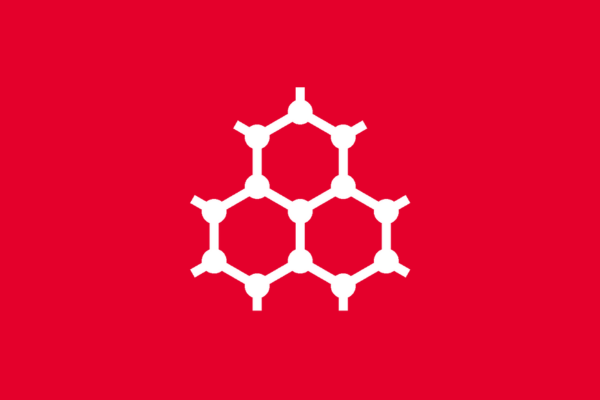1. After an initial introduction to the history and the current state of nanomachine research, various definitions of the term \"nanomachine\" and basic classification is presented. Differences and similarities of machines and nanomachines are discussed. In relation to supramolecular nanomachines, the basics of supramolecular chemistry are presented.
2. The methods of motion/function monitoring and visualization of nanomachines are presented. Attention is paid to rotational and conformational changes, followed by methods of propulsion - self-propelled vs. externally controlled nanomachines. Students get acquainted with the problematics of nanomachine motion in liquid.
3. Attention is paid to coordination chemistry, coordinate covalent binding and its description. Different types of coordination complexes are presented and their stability is discussed. In addition to complexes, attention is also paid to other compounds useful in the synthesis of nanomachines.
4. Various types of molecular functional units are presented with particular focus on molecular rotors and molecular brakes. Factors influencing the rotation speed, the problem of continuous rotation and the effectiveness of the braking elements are discussed.
5. Based on the previous topic, the nanovehicles are presented. Various types and methods of controlling their movement is introduced. Problems of synthesis efficiency and manipulation with nanomachines are demonstrated on the example of these nanomachines.
6. Attention is paid to molecular nanomachines based on azo- and similar compounds. Students get acquainted with nanotransporters, nanolayers with adjustable height or tweezer based on these compounds. In connection with nanotransporters, the use of nanomachines as drug carriers is discussed.
7. After initial introduction of basic topological terms, understanding the issue of planarity in molecular structure, and molecular knots, supramolecular nanomachines based on rotaxanes and catenates are presented. The methods of their synthesis are listed and the students get acquainted with the principles of molecular elevators and switches, including their control.
8. Based on the previous topic, practical applications of rotaxane-based nanomachines are demonstrated. Students get acquainted with molecular muscles, molecular press, molecular layers with adjustable hydrophobicity/hydrophilicity, etc.
9. Attention is paid to nanomachines based on coordination compounds with particular focus on ruthenium complexes. Molecular analogy of molecular analogy of current through extension cable from source to appliance is demonstrated. The problem of self-assembly is discussed and students get acquainted with molecular wires.
10. The use of carbon nanotubes for the construction of nanomachines is discussed. Molecular grinder and molecular weights are presented. Further, in connection with the topic of self-assembly, the use of carbon nanobelts is presented.
11. The theme of nanomachines and question of primary forms of life is discussed. Differences between synthetic and biological nanomachines are presented, and students get acquainted with basic types of biological nanomachines with particular attention to protein motors.
12. Based on the previous topic, structure and motion of flagella and cilia are presented. Further, examples of their use in the construction of nanomachines are shown and a hybrid approach to the construction of nanomachines using biological and synthetic components is discussed.
13. Students get acquainted with DNA-based nanomachines Based on the previously discussed self-assembly the possibility of using DNA for the construction of components for nanomachines is presented.
14. Test.
2. The methods of motion/function monitoring and visualization of nanomachines are presented. Attention is paid to rotational and conformational changes, followed by methods of propulsion - self-propelled vs. externally controlled nanomachines. Students get acquainted with the problematics of nanomachine motion in liquid.
3. Attention is paid to coordination chemistry, coordinate covalent binding and its description. Different types of coordination complexes are presented and their stability is discussed. In addition to complexes, attention is also paid to other compounds useful in the synthesis of nanomachines.
4. Various types of molecular functional units are presented with particular focus on molecular rotors and molecular brakes. Factors influencing the rotation speed, the problem of continuous rotation and the effectiveness of the braking elements are discussed.
5. Based on the previous topic, the nanovehicles are presented. Various types and methods of controlling their movement is introduced. Problems of synthesis efficiency and manipulation with nanomachines are demonstrated on the example of these nanomachines.
6. Attention is paid to molecular nanomachines based on azo- and similar compounds. Students get acquainted with nanotransporters, nanolayers with adjustable height or tweezer based on these compounds. In connection with nanotransporters, the use of nanomachines as drug carriers is discussed.
7. After initial introduction of basic topological terms, understanding the issue of planarity in molecular structure, and molecular knots, supramolecular nanomachines based on rotaxanes and catenates are presented. The methods of their synthesis are listed and the students get acquainted with the principles of molecular elevators and switches, including their control.
8. Based on the previous topic, practical applications of rotaxane-based nanomachines are demonstrated. Students get acquainted with molecular muscles, molecular press, molecular layers with adjustable hydrophobicity/hydrophilicity, etc.
9. Attention is paid to nanomachines based on coordination compounds with particular focus on ruthenium complexes. Molecular analogy of molecular analogy of current through extension cable from source to appliance is demonstrated. The problem of self-assembly is discussed and students get acquainted with molecular wires.
10. The use of carbon nanotubes for the construction of nanomachines is discussed. Molecular grinder and molecular weights are presented. Further, in connection with the topic of self-assembly, the use of carbon nanobelts is presented.
11. The theme of nanomachines and question of primary forms of life is discussed. Differences between synthetic and biological nanomachines are presented, and students get acquainted with basic types of biological nanomachines with particular attention to protein motors.
12. Based on the previous topic, structure and motion of flagella and cilia are presented. Further, examples of their use in the construction of nanomachines are shown and a hybrid approach to the construction of nanomachines using biological and synthetic components is discussed.
13. Students get acquainted with DNA-based nanomachines Based on the previously discussed self-assembly the possibility of using DNA for the construction of components for nanomachines is presented.
14. Test.
